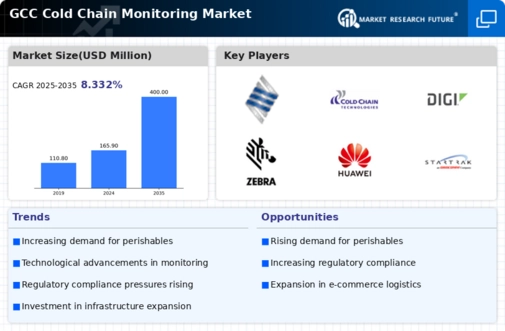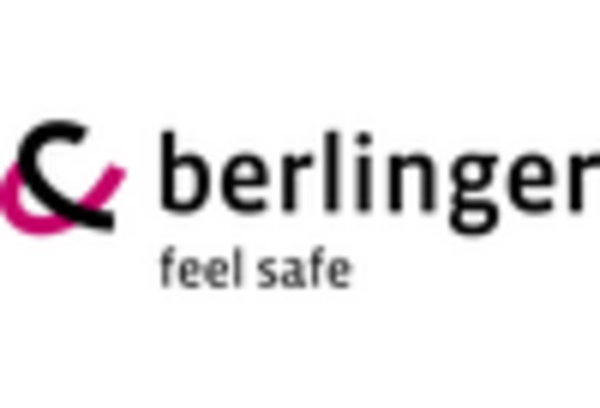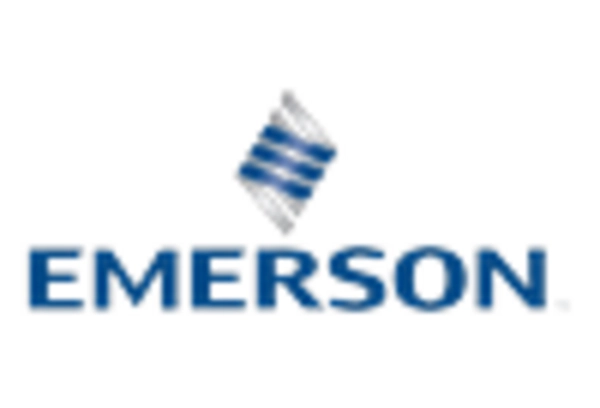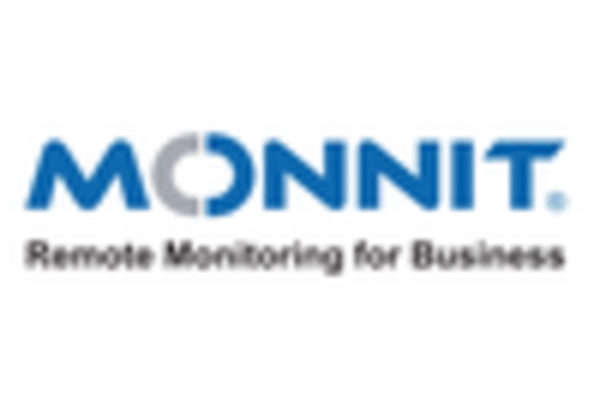Increasing Regulatory Standards
The implementation of stringent regulatory standards in the GCC region is driving the cold chain-monitoring market. Governments are enforcing regulations to ensure food safety and quality, particularly for imported goods. Compliance with these regulations often requires sophisticated monitoring systems to track temperature and humidity levels throughout the supply chain. As a result, companies are investing in cold chain-monitoring solutions to meet these requirements. The market is expected to grow as businesses seek to avoid penalties and maintain consumer trust, with an estimated increase in market value of 15% over the next five years.
Rising Demand for Perishable Goods
The increasing consumption of perishable goods in the GCC region is a primary driver for the cold chain-monitoring market. As the population grows and urbanization accelerates, the demand for fresh produce, dairy, and meat products rises. This trend necessitates robust cold chain solutions to ensure product quality and safety. According to recent data, the GCC food and beverage sector is projected to reach a market value of approximately $200 billion by 2025, highlighting the need for effective cold chain management. The cold chain-monitoring market plays a crucial role in maintaining the integrity of these products throughout the supply chain, thereby supporting the overall growth of the food industry in the region.
Focus on Food Safety and Quality Assurance
The heightened focus on food safety and quality assurance in the GCC region is propelling the cold chain-monitoring market. Consumers are becoming more aware of foodborne illnesses and the importance of proper storage conditions for perishable goods. This awareness drives demand for reliable monitoring systems that can provide real-time data on temperature and humidity levels. As a result, businesses are increasingly investing in cold chain-monitoring solutions to ensure compliance with safety standards and to enhance consumer confidence. The market is likely to see a growth rate of around 20% as companies prioritize food safety in their operations.
Technological Integration in Supply Chains
The integration of advanced technologies such as IoT, AI, and blockchain into supply chains is significantly influencing the cold chain-monitoring market. These technologies enhance real-time tracking and monitoring of temperature-sensitive products, ensuring compliance with safety standards. In the GCC, the adoption of IoT solutions is expected to grow by over 30% annually, reflecting a shift towards more efficient logistics operations. The cold chain-monitoring market benefits from these advancements, as they provide stakeholders with actionable insights and data analytics, ultimately improving operational efficiency and reducing waste.
Growth of E-commerce and Online Grocery Shopping
The rapid expansion of e-commerce and online grocery shopping in the GCC is a significant driver for the cold chain-monitoring market. As consumers increasingly prefer the convenience of online shopping, retailers are compelled to enhance their logistics capabilities, particularly for perishable items. This shift has led to a surge in demand for effective cold chain solutions to ensure that products remain fresh during transit. The e-commerce food market in the GCC is projected to grow by 25% annually, indicating a substantial opportunity for cold chain-monitoring systems to support this evolving retail landscape.
















Leave a Comment